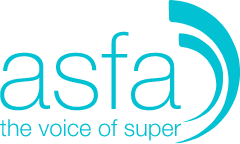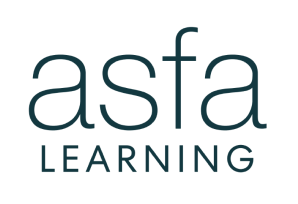10 November 2021
Living costs for Australian retirees rise at fastest pace in a decade.
The Association of Superannuation Funds of Australia (ASFA) says accelerating cost of living pressures are impacting on retirees with the highest annual increase in retiree budgets since 2010.
The ASFA Retirement Standard September quarter 2021 figures indicate that couples aged around 65 living a comfortable retirement need to spend $63,799 per year and singles $45,239, up by 0.9 per cent and 1.0 per cent respectively on the previous quarter.
The percentage increase in the budgets for those aged around 65 was higher than the increase in the September quarter All Groups CPI of 0.8 per cent.
“Australian retirees are now facing significant pressure on their budgets, given a range of unavoidable price hikes including petrol and council rates,” said ASFA Deputy CEO, Glen McCrea.
“It’s critical that future retirees are able to build sufficient retirement savings to ensure they can have dignity, health, vitality and connection in retirement. Moving Australia to the 12 per cent Superannuation Guarantee (SG) setting is an important step towards ensuring future generations can be confident to meet the financial challenges of retirement,” Mr McCrea concluded.
Over the year to September 2021 prices were up by around 2.8 per cent for the ASFA comfortable couple budget and by 3.0 per cent for the ASFA comfortable single budget.
Details for the retirement budget price changes
- Automotive fuel prices reached a record level in the September 2021 quarter, leaping 7.1% due to higher global oil prices amid economic recovery and supply disruptions.
- Over the past twelve months automotive fuel prices rose sharply (+24.6%) with a strong increase in the price of motor vehicles (+6.2%) as well.
- Property rates rose 3.3%, which is the largest rise since 2016. Many councils increased rates after implementing smaller rises, rebates or rate freezes last year.
- Restaurant meals (+1.6%) and Takeaway and fast foods (+1.3%) both rose primarily due to reduced uptake of the NSW ‘Dine & Discover’ and City of Melbourne ‘Melbourne Money’ voucher schemes compared to the June 2021 quarter. These vouchers reduced the out-of-pocket costs for consumers, hence fewer vouchers being redeemed resulted in a price rise in the September quarter.
- Furniture (+3.8%) prices rose due to supply shortages and elevated demand from households.
- Motor vehicles rose 1.4% due to continued strength in demand combined with supply constraints such as the global semi-conductor shortage, COVID-related factory closures and shipping costs.
- Audio, visual and computing equipment prices rose 1.8% in the quarter. Prices increased for goods such as TVs and computers as supply disruptions, due in part to the global semi-conductor chip shortage, were combined with elevated demand from households.
- Over the past twelve months there was a strong increase in the costs of domestic holiday travel and accommodation (+3.8%).
Details for the various updated budgets follow.
Table 1: Budgets for various households and living standards for those aged around 65 (September quarter 2021, national)
| Household type | Single Modest | Couple Modest | Single Comfortable | Couple Comfortable |
|---|---|---|---|---|
| Housing – ongoing only | $104.87 | $117.82 | $123.10 | $128.49 |
| Energy | $33.96 | $45.61 | $43.02 | $53.35 |
| Food | $95.43 | $176.93 | $123.39 | $214.46 |
| Clothing | $19.80 | $37.62 | $26.45 | $49.25 |
| Household goods and services | $34.70 | $40.75 | $77.15 | $95.00 |
| Health | $52.06 | $100.62 | $106.50 | $199.54 |
| Transport | $95.12 | $101.47 | $155.32 | $168.38 |
| Leisure | $97.66 | $153.30 | $189.65 | $285.02 |
| Communications | $17.64 | $19.88 | $22.06 | $28.72 |
| Total per week | $551.25 | $793.99 | $866.64 | $1,222.20 |
| Total per year | $28,775 | $41,446 | $45,239 | $63,799 |
Table 2: Budgets for various households and living standards for those aged around 85 (September quarter 2021, national)
| Household type | Single Modest | Couple Modest | Single Comfortable | Couple Comfortable |
|---|---|---|---|---|
| Housing – ongoing only | $103.10 | $115.88 | $120.98 | $126.35 |
| Energy | $33.90 | $45.54 | $42.95 | $53.27 |
| Food | $95.18 | $176.46 | $123.07 | $213.90 |
| Clothing | $20.58 | $39.10 | $27.49 | $51.18 |
| Household goods and services | $52.61 | $75.41 | $155.54 | $186.28 |
| Health | $90.61 | $126.62 | $150.00 | $236.65 |
| Transport | $40.46 | $50.57 | $45.51 | $55.62 |
| Leisure | $63.28 | $90.67 | $130.56 | $183.63 |
| Communications | $17.74 | $19.98 | $22.18 | $28.87 |
| Total per week | $517.46 | $740.24 | $818.27 | $1,135.74 |
| Total per year | $27,011 | $38,640 | $42,713 | $59,286 |
The figures in each case assume that the retiree/s own their own home and relate to expenditure by the household. This can be greater than household income after income tax where there is a drawdown on capital over the period of retirement. All calculations are weekly, unless otherwise stated. Annual figure is 52.2 times the weekly figure.
More information
Costs and summary figures can be accessed here. Australians can find out more about superannuation on the independent Super Guru website.
For further information, please contact:
Jacqui Maddock, 0451 949 300.
About the ASFA Retirement Standard
Since 2004 the ASFA Retirement Standard has served as a retirement companion for Australians, providing a reliable retirement savings guide by benchmarking the annual budget needed to fund either a comfortable or modest standard of living in the post-work years. It is updated quarterly to reflect inflation, reviewed regularly to reflect changes in lifestyle, and provides detailed budgets of what single people and couples would need to spend to support their chosen lifestyle.



